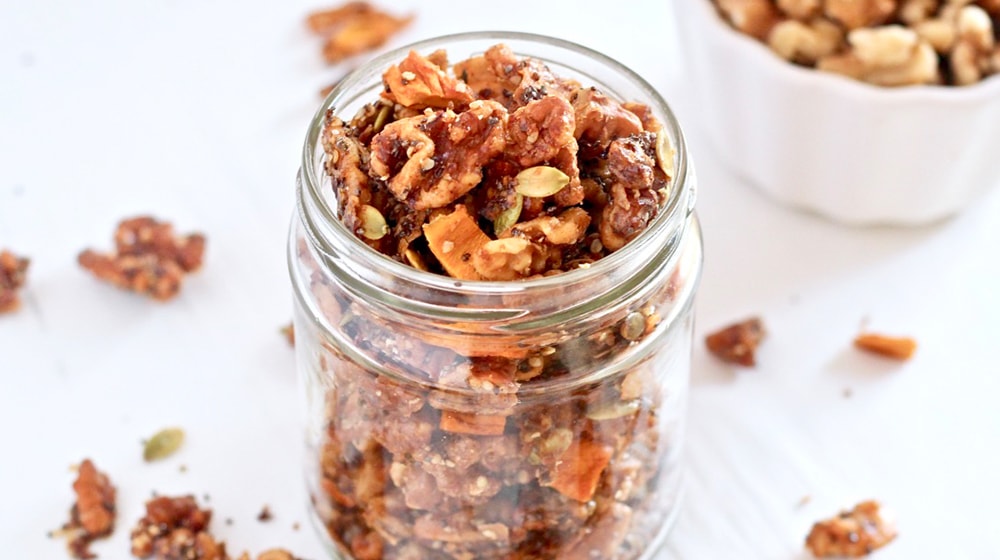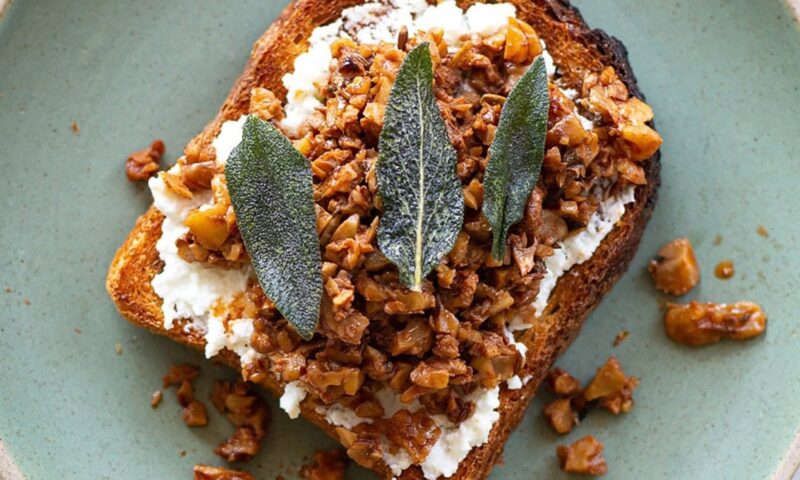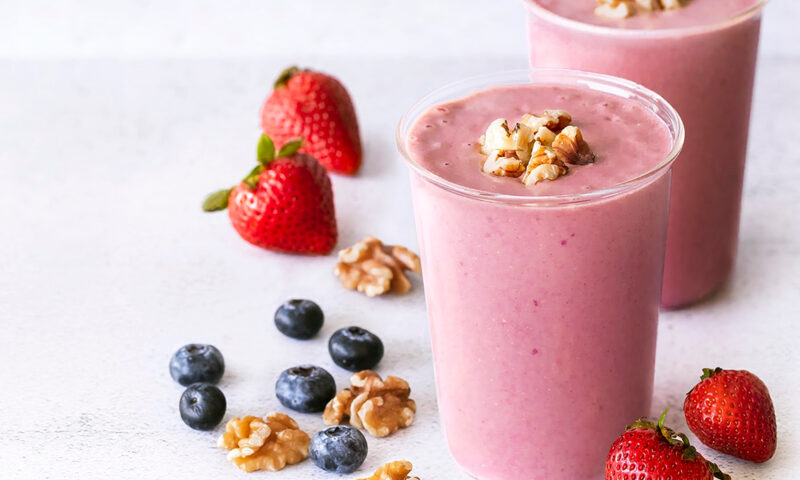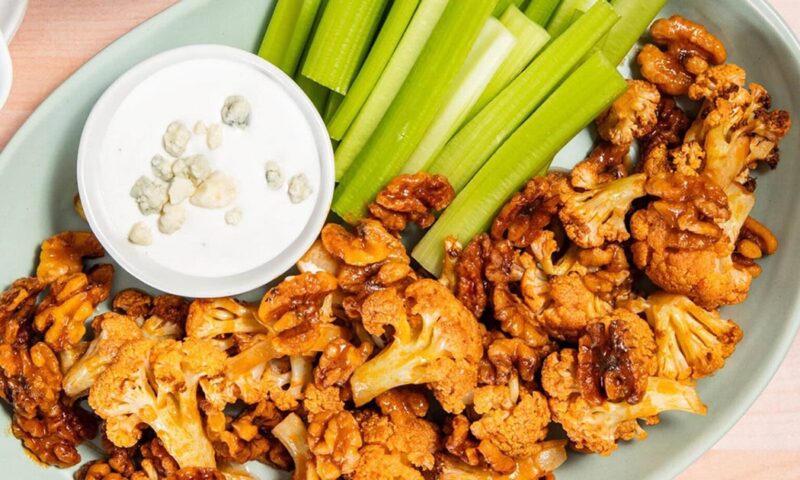You’ve probably heard the old saying “breakfast is the most important meal of the day” too many times to count. And while all meals are important, a nutritious breakfast can definitely set you off on the right foot for the day by providing important nutrients, energy to focus, and fuel to power you through where ever the morning takes you. 1
Yet, in spite of this, many of us still skip breakfast sometimes. Maybe it’s because we’re in a hurry and don’t have time. Or, maybe you just simply don’t feel like eating. Regardless of the reason, there’s many ways to power up your breakfast… AND many reasons to do so.
But, for someone who simply doesn’t enjoy eating breakfast or isn’t hungry, or maybe needs something quick and easy as they head out the door, finding a breakfast option that is both nutritious and delicious can be a struggle.

Why add walnuts to your breakfast?
Walnuts are a nutrient-dense option that can be a great choice for many people. They’re easy to eat on the go, and because they have good fats, protein, and fiber, you don’t have to eat a large amount to feel full and satisfied.
One ounce of walnuts offers 4g of protein, 2g of fiber, and is particularly rich in good fats known as polyunsaturated fatty acids (PUFAs). The 13g of PUFAs in walnuts includes 2.5g of the plant-based omega-3 ALA.
PUFAs may offer a cardioprotective benefit, meaning they could help protect your heart and blood vessels. Research has shown that people who reduce their consumption of saturated fat and replace it with PUFAs may have a lower risk of heart disease. 2, 3
And another study discovered even more: a diet rich in PUFAs may help lower triglyceride levels after a meal. 4 This study looked at two groups of healthy men and women (ages 18-35). One group ate a diet higher in PUFAs for 7 days and the other group ate a standard diet. At the end of the study, all participants were given a high saturated fat meal. The participants who had been on the higher PUFA diet for the last 7 days had lower blood triglyceride levels after this meal than the participants who had eaten a standard diet. This means a PUFA-rich diet may protect against higher triglyceride levels that would normally be seen after eating a high amount of saturated fat. The results also indicated this benefit may be more protective in women than in men.
Another potential benefit of adding walnuts to your daily breakfast relates to your feelings of hunger and fullness, which can go well beyond simple weight management and your ability to know when to eat and when to stop eating. Feeling full and satisfied is influential to daily mood and energy levels. Ever heard the term “hangry”? While we usually refer to hungry, cranky people in a joking matter, the term is rooted in the fact that we generally experience negative moods when we are hungry. According to another study, also in healthy men and women, a PUFA-rich diet may help balance the hormones responsible for sending hunger and fullness cues to the brain. 5
More studies that are larger, longer in length and include diverse populations are needed to understand the population-wide effects. Because participants were eating whole foods, it is hard to say if these changes were due to one specific type of PUFA, food source, interactions between various hormones, or a combination of factors.
But, it’s safe to say that adding a serving of walnuts to your breakfast could help give you key nutrients that may make a difference. You can throw them on top of a yogurt bowl, add them into oatmeal, grind them up into a smoothie, or try one of these great recipes:
- Grain Free Walnut and Mango Granola Topper
- Mixed Berry Walnut Chia Smoothie
- Muhammara Walnut Shakshuka
- Walnut Energy Bars
- Chunky Monkey Overnight Oats
And remember, all the reasons that eating breakfast is important all apply to lunch. Discover delicious and satisfying lunch recipes here.
References:
1. Dwyer, Johanna. Defining Nutritious Breakfasts and Their Benefits. Journal of the Academy of Nutrition and Dietetics. Volume 114, Issue 12, Supplement, Pages S5–S7. DOI: https://doi.org/10.1016/j.jand.2014.10.005.
2. Yanping Li, Adela Hruby, Adam M. Bernstein, et al. Saturated Fats Compared With Unsaturated Fats and Sources of Carbohydrates in Relation to Risk of Coronary Heart Disease. Journal of the American College of Cardiology Oct 2015, 66 (14) 1538-1548; DOI:10.1016/j.jacc.2015.07.055
3. U.S. Department of Health and Human Services and U.S. Department of Agriculture. 2015 – 2020 Dietary Guidelines for Americans. 8th Edition. December 2015. Available at http://health.gov/dietaryguidelines/2015/guidelines/.
4. Sepideh Kaviani,et al. A 7-day high-PUFA diet reduces angiopoietin-like protein 3 and 8 responses and postprandial triglyceride levels in healthy females but not males: a randomized control trial. BMC Nutrition 2019, 5:1 DOI: https://doi.org/10.1186/s40795-018-0262-7
5. Stevenson J, Paton C, Cooper J. Hunger and satiety responses to high-fat meals after a high-polyunsaturated fat diet: A randomized trial. Nutrition. Volume 41, September 2017, Pages 14-23. DOI: https://doi.org/10.1016/j.nut.2017.03.008



